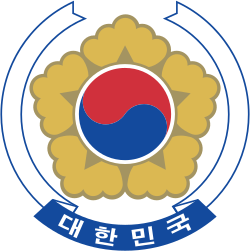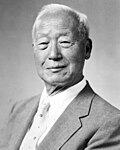You can help expand this article with text translated from the corresponding article in Korean. (May 2025)Click [show] for important translation instructions.
|
| ||||||||||||||||||||||||||||||||||
All 203 seats to the House of Representatives 102 seats needed for a majority | ||||||||||||||||||||||||||||||||||
|---|---|---|---|---|---|---|---|---|---|---|---|---|---|---|---|---|---|---|---|---|---|---|---|---|---|---|---|---|---|---|---|---|---|---|
| Turnout | 91.14% ( | |||||||||||||||||||||||||||||||||
| ||||||||||||||||||||||||||||||||||
 Results by constituency | ||||||||||||||||||||||||||||||||||
| ||||||||||||||||||||||||||||||||||
| This article is part of a series on |
 |
|---|
Legislative elections were held in South Korea on 20 May 1954. [1] The result was a victory for Syngman Rhee's Liberal Party, which won 114 of the 203 seats. Voter turnout was 91.1%.

